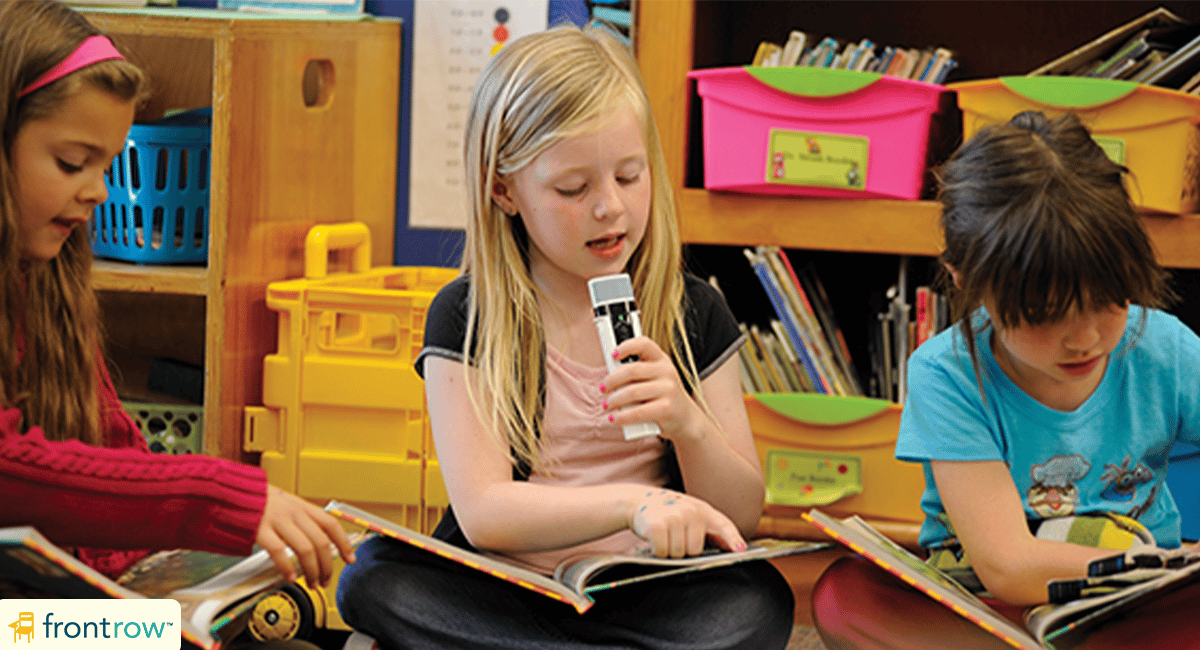
Spend some time in an engaged classroom and you will most likely hear the buzz of teacher and students’ voices, multiplication tables being explored, pencils and crayons slide-tapping across paper, and a variety of devices whirring in the background (printer, tablets, 3D printers, science equipment, etc.). The classroom can be an incredible and dynamic space of active learning, but for some it can also be a cacophony of sound that makes learning difficult and communicating a challenge.
Students need to be able to hear the instruction being delivered clearly, and doing so oftentimes requires high-quality, highly-intelligible audio. When there is distracting background noise, poor audio, and challenging acoustics within a classroom, not only can learning become difficult but teachers may need to strain and repeat themselves, adding to the overall fatigue in a classroom. An easy-to-use, high-quality audio system that includes speakers, Bluetooth capabilities, and mics supports an active and improved learning environment where sound is less of a barrier.
What can be achieved with classroom sound technology? Here are six reasons that exceptional sound is essential in a classroom.
1. Improves student behavior and focusListening is a skill and it can be hard work for young or newer learners, students who cannot speak the language of the classroom well, or if lots of information needs to be absorbed in each day. Because of this, students’ minds can wander which can lead to misbehavior and disengagement from the learning environment. But classroom sound technology helps improve student focus and behavior because it reduces distractions and helps students hear the lessons more clearly. When focus and clear instruction is successfully facilitated, attentiveness, understanding, and behavior is more likely to improve.
2. Increases comprehensionStudents, especially younger students and English language learners, can miss up to 40% of what the teacher says for a variety of reasons – seating arrangements, background noise, reverberation, still-developing vocabularies and brains – which is a huge disadvantage. By ensuring that the teacher’s voice is clear and evenly distributed around the room, classroom sound systems can be tremendously helpful in overcoming these barriers. The probable results? Improved literacy, comprehension, retention, and participation which can all lead to positive academic progress.
3. Creates a more inclusive learning environmentWhile classroom sound technology is valuable for all students, it has even greater advantages for children with hearing impairments and learning disabilities. Classroom sound, and lesson capture, helps to compensate for the difficulty these students may have in understanding spoken content. Quality audio provides a level playing field so that all students can hear and participate with more confidence – a powerful indicator of future learning experiences. In some schools where classroom sound systems have been installed and implemented, they have seen a reduction in Special Education referrals.
4. Reduces vocal fatigue for teachersTeachers need to project their voice to the back of the classroom and because of this, about half of all teachers will experience a voice disorder during their career leading to time off so their voices can recover. Time off for their voices also means time off from the classroom which is disruptive to learning. FrontRow, an audio solutions company that develops technology for effortless communication in any learning environment, has solutions that eliminate this added strain. Most teachers using FrontRow technology report more energy and greater teaching satisfaction. Using a classroom sound system has been shown to reduce teacher sick days due to vocal fatigue by 63%.
5. Empowers quieter students by building confidenceStudents who hesitate about classroom participation might be encouraged to engage more if they can hear, and be heard, properly. Most classroom sound systems come with student microphones that can be used for reading aloud, oral presentations, and class discussions. Having the sound system ‘speak up’ for a shy or quiet student often has the remarkable effect of building their self-confidence in public speaking and interactions with peers.
6. Compensates for background noise and seating arrangementThink of all the potential background noises in a classroom. From outside traffic and construction to inside heating and hallway chatter, there is an endless stream of potential distractions for students. Children with normal hearing need the teacher’s voice to be 15 decibels louder than that background noise to be intelligible, but direct speech (teacher’s voice) drops 6 decibels for every doubling of distance. This means that a child sitting a meter from the teacher may hear their voice at 65 decibels, but a child sitting four meters away will only perceive their talking at 53 decibels. Since noise levels remain fairly constant around the room, the child sitting farther away will inevitably miss more important content. This is the fundamental reason why schools use classroom sound systems – to make sure students have equal access to clear verbal information no matter where they sit in a classroom and no matter how the noise conditions may change throughout the day or year.
A high-quality classroom sound system clearly does more than amplify sound – it can also improve student behavior, focus, comprehension, and confidence; create a more inclusive, active learning environment; and reduce teacher fatigue and learning disruption. A win-win situation for all.
To learn more about how classroom and campus audio solutions have helped schools and districts across the county, click here – FrontRow Case Studies.
To learn more about dynamic and award-winning audio solutions, visit www.gofrontrow.com.